
| Cyprus |
| |

Location has blessed Cyprus with an excellent climate and a fascinating history that spans 9,000 years. This small country is the third largest island in the Mediterranean, a convenient gateway to Europe, Asia and Africa. Two million tourists are attracted annually to this safe and sunny land.
The Cypriot people are gentle, friendly and generous and the richness of their culture is always evident. Since the 1st century A.D. the Greek Orthodox Church has been the mainstay of religion in Cyprus and continues to preserve old style values and close-knit family units. As a result, handicrafts, music, dance and festivals have been passed down from generation to generation.
The Greeks were the first to settle in Cyprus but over the years, numerous foreigners have left their mark. Historians and archaeologists are delighted with Roman ruins, Byzantine churches, Crusader castles, Christian basilicas and Venetian fortifications.
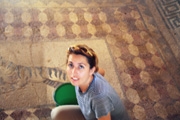
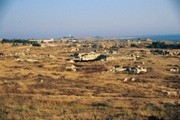
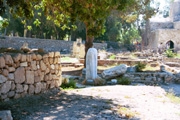
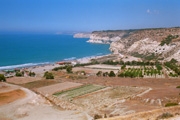
Limassol, (Lemesos to Cypriots) is the country’s main port. It stretches along the south coast, surrounded by citrus fruit plantations and vineyards. It is a vibrant seaside town with a busy nightlife, celebrating Carnival in February and the Wine Festival in September.
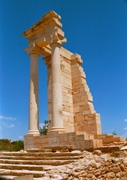
Near Limassol, the Kourion site is one of the most spectacular archaeological sites on the island. The ruins of the ancient city-kingdom, include a huge Greco-Roman Theater which has been partly restored and is still used for concerts today. It provides an excellent view overlooking the vast, blue Mediterranean. The Sanctuary of Apollo Ylatis, 3 km west of Kourion, was a very important site when the cult thrived ( 8th century BC - 4th century AD). Part of the huge temple has been restored.
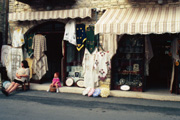
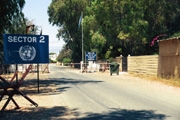
The famous Famagusta Gate protects the ancient town within the walls. Trendy bars, cafes and night spots brighten the street. Red, pink and purple flowers cascade from window boxes, adding a touch of old world charm. Barter over local crafts like lace, embroidery, woven articles, silver and pottery.
Tourists who visit Cyprus follow in the footsteps of figures as diverse as St. Paul, Alexander the Great and Leonardo da Vinci. The whims of history have endowed it with a rich heritage making it a world-renowned destination for those who love art, history and archaeology. For many, spectacular beauty, lovely beaches and inviting resorts are sufficient for a perfect holiday.
| |
| 'Hot Tips' |
Phone:(212) 683-5280
Fax: (212) 683-5282
In Canada, the Cyprus Tourism Organization is represented by the RMR Group in Toronto.
Phone: (416) 485-8724
Fax: (416) 485-8256
Cruises are available all year round:
Two day cruises to Egypt
Two-day cruises to Israel, with visits to Jerusalem and Bethlehem.
Three-day cruises to Egypt and Israel.
Seven-day cruises to Egypt, Israel, the Greek Islands and Piraeus.
The Anassa, Polis - Super deluxe resort on western tip which caters to the wealthy. Rooms US$ 400/night. reservations (357) 6-888000.
Kykko Monastery - high in the Troodos Mountains is famous for its superb museum, a chapel that shimmers in gold, and a winery famous for its red zivania , a potent aperitif.Its most famous monk was Archbishop Makarios.
| |
| 'Cyprus - When You Go' |
Language- Main language is Greek, but English is widely spoken.
Climate- Cyprus averages 340 days of sunshine a year.
Population- 735,000 which includes 135,000 in the Turkish region.
Electricity: 240 volts, a.c. with square pin
Currency: US$1=Cyprus pound.52
Food,Water,Wine: Extremely high standards. Service excellent, servings generous, prices modest.
Agrotourism: Encourages the use of traditional houses in picturesque villages for tourist use. Go to www.agrotourism.com
| |